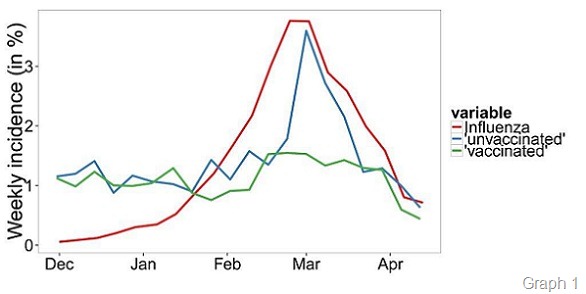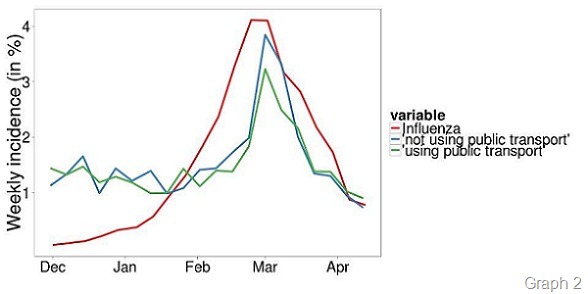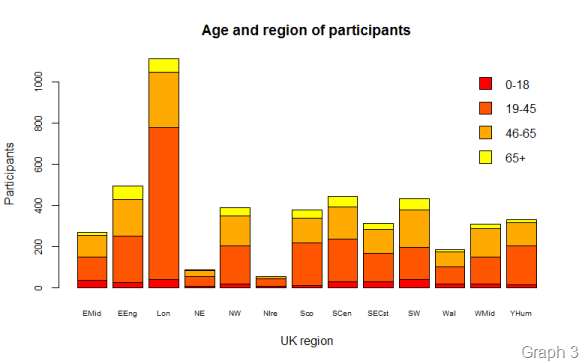Interview conducted by April Cashin-Garbutt, BA Hons (Cantab) on 4th Dec 2012

Video title: Flusurvey: an interview with Dr Alma Adler
Run time: 9:15 mins
Flusurvey: an interview with Dr Alma Adler
Video by AZoTV
Can you tell us about Flusurvey?
Flusurvey is an online system of tracking influenza across the UK. We are linked to other flu surveys across Europe, so there are about 12 flu surveys across Europe in total.
What we are doing in the UK is we are asking people to join up and every week tell us how they are feeling. And in that way we are able to track influenza across the UK as well as come up with risk factors for what makes you more likely to report having a flu-like illness and what makes you less likely to.
What are the main aims of Flusurvey?
Before us, most methods of looking at flu were based on GP or hospitalisation data. People who show up to hospital or to the GP are not necessarily going to be representative of the overall population as a whole. Some people are more likely to go to the GP than others. Also you are more likely to show up to the GP if you’ve got really severe cases of flu. There is a spectrum – some people with flu are very ill and some are just mildly ill. So you are not able to get the whole idea of the spectrum of flu.
By doing it online we are hoping to get enough participants so that we can look at flu overall within the UK. What we do is that we also provide weekly reports of the incidence to the HPAs (the Health Protection Agencies). We can look at risk factors such as taking public transport, if you have a pet, gender, age, who you live with.
For the first time this year we are trying to get at the question of man flu and whether men are more likely to report more severe symptoms. In the past we have found that women are actually more likely to report flu-like illness, but men may report more serious symptoms. So for the first time this year we have introduced a question asking you to rate how you are feeling on a scale of 0 to 100, with 100 being the best health you could imagine and 0 being fairly poorly.
How did Flusurvey go in previous years?
Just to give you an idea of what we’ve done in previous years, this here is data from last year’s Flusurvey.

Flusurvey has been running for four years now. These are two graphs from last year (graph 1 & 2) looking at the incidence of people reporting flu-like symptoms. So this red line on both of them is actually confirmed flu – so that is when we know there was confirmed flu around.
Graph 1 is looking at people who were vaccinated and people who were unvaccinated. The green line is people who were vaccinated against flu and the blue line is people who were unvaccinated. You can see that in periods where there wasn’t much confirmed flu, there wasn’t much difference. However, when we know that there was flu around, people who were unvaccinated were much more likely to be reporting flu-like illness, whereas for people that were vaccinated there wasn’t as much of a difference.
So if you look at overall the data for last year there was only about a 10% greater risk for reporting flu-like symptoms if you were unvaccinated. However, if you look at the period where there was a lot of flu, you can see there is a much bigger difference.

If you compare that to graph 2 which is data looking at public transport use. Again this red line is confirmed cases of flu. The blue line is people who don’t use public transport; the green line is people who use public transport. You can see there is very little difference. In fact, during the time of the highest peak of flu, people using public transport reported slightly fewer symptoms, although that is not in any way significant. But this shows at least last year there wasn’t any increased risk for reporting flu-like illness if you took public transport.
How is Flusurvey going this year?
It’s going great we’ve got over 3,000 participants, we’re hoping to get at least 5,000 so we are just over halfway there. Here you can see some graphs of our participants for this year. We have only asked for reports for two weeks now, so we don’t actually have any good flu data yet.

Here (in graph 3) you can take a look at the age and region of the participants. You can see that not surprisingly we have the highest number of participants from London. We are really lagging behind in Northern Ireland, the North East as well as the Midlands. We are really trying to recruit more participants from these regions.
If you look at the colours, this represents different age groups. In the age group 19-45 we have our highest number of participants. The older age groups 65+ are lagging behind as well as in the 0-18 the youngest age group. So we are really hoping to recruit some more participants from here.

If you look at weekly incidence by age (graph 4) you see two weeks. The first week we always find a bit more because the questions is worded such that have you reported symptoms since your last visit so some of the data is going to be historical for example for a few weeks. So the data for week 1 probably represents more than one week of reported flu-like illness. For that reason the first week is always much higher and the week 2 data is much more like what we would expect to find at this time of year.
You can see from week 2 that flu-like illness incidence is highest in the group 19-45 age group; 45-65 is less and least in 65 and older. We found this last year too – that the oldest age group actually reported less flu. So this year we are going to be looking at severity of symptoms in the older age group to see if they are reporting slightly more severe symptoms.

Graph 5 is looking at overall incidence by region. These are not age stratified so some of this might be caused by different percentages of different age groups. But we are finding that from our limited population that we have from the North East we have the highest incidence as well as in Northern Ireland and the lowest incidence in the East Midlands as well as Eastern England and London.
How can people get involved in Flusurvey?
It’s very easy, you just log on to flusurvery.org.uk and there is a “Join the survey” button and you just press that and you can start. We first ask you to fill in a background profile, so this will ask you general questions as to risk factors such as do you take public transport, do you have pets, age, gender, where you work and things like that. It is all completely anonymous.
Then every week we ask you to tell us how you’re feeling. We will send you a newsletter every week so if you just click on the link it should take you right to your symptom page. If you are healthy, you just click on the “I’m healthy” and the only other question we ask is the how are you feeling 0-100. That’s it – it probably takes about 10 seconds if you’re feeling healthy.
If you’re not feeling healthy it takes a couple more minutes because we ask you about:
-
the duration of your symptoms
-
how bad your symptoms are
-
if you’ve taken any kind of medication
-
if you’ve called your GP
-
if you’ve been to you GP
-
if you have a fever and if so how high etc.
Are there any incentives?
This year for the first time we have two different competitions. The first is that we really are trying to get more people involved, so we are asking participants to recruit other members. To do this, when you fill out your background profile there’s a questions that asks “how did you hear about Flusurvey?” and if you say referred by a friend or co-worker you get a box and it asks you to put in their username. Every person you recruit, you get entered into a draw.
The second competition that we are having is the number of times you fill in your survey. So every week that you fill out your survey you get entered into a second prize draw and for both of these we are giving away a Google Nexus, a Kindle Fire as well as all sorts of lovable huggable giant flu viruses (soft toys).
About Dr Alma Adler
 Alma started out her career with a phd in biological anthropology and archaeology, but changed to epidemiology after a year in South Africa studying health and disease in people who had lived 10,000 years ago. In 2006 she decided to study people slightly "less dead" and studied to become an epidemiologist.
Alma started out her career with a phd in biological anthropology and archaeology, but changed to epidemiology after a year in South Africa studying health and disease in people who had lived 10,000 years ago. In 2006 she decided to study people slightly "less dead" and studied to become an epidemiologist.
She is currently running the Flusurvey project in the Department of Infectious Disease Epidemiology and the London School of Hygiene and Tropical Medicine. This is an online nationwide research project aiming to study and understand the spread of flu, as well as understand risk factors. More details can be found at Flusurvey.org.uk